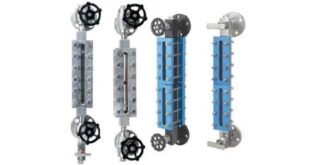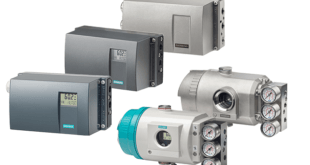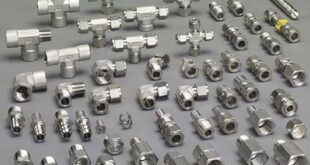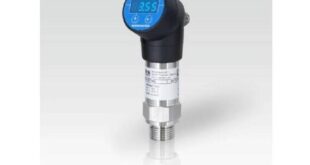What is an orifice plate | Design and manufacturing of plate orifice
What is an orifice plate
Orifice plates are one of the most popular devices (like to venturi ) along with flow meters and flow transmitters for measuring and controlling fluid flow. The shape and manufacturing tolerances of plates used in measuring applications are defined in the international standardization publications of ISO, AGA, ASME, etc. From the formulas and data in these publications, the relations and values of flow, differential pressure and plate orifice are determined.
In flow control applications, orifice plates are used as limiting devices to regulate fluid flow or reduce flow pressure downstream of the orifice plate. Using a fixed restriction orifice can be beneficial and economical by reducing the demand on other components of the flow system.
Unlike measurement orifices, the measurement and design of restriction orifices are not defined by standard organizations. In addition, restriction orifices, abbreviated as “RO”, are often subjected to severe flow conditions associated with high pressure drop and associated liquid conditions resulting from liquid-to-gas flash, cavitation, and acoustic (choked) flow. In demanding applications, it is not enough to imitate the design of measuring orifices.
Orifice plates are normally installed between a set of orifice flanges and installed in a smooth straight pipe to avoid disturbing the flow pattern of fittings and valves.
Types of orifice plates
Square edge hole (standard)
For orifices with square edge concentric holes, holes and chamfers, the standard method is to limit the plate edge thickness. If no other method is specified, the plates are chamfered according to the currently accepted standards.

Quarter edge hole
A quarter edge hole is an opening whose entrance edge is round. Instead of being chamfered, the plate conforms to the desired edge thickness. The radius of the quarter-circle hole is a function of the hole-to-tube ratio (d/D). The thickness in the throat is equal to the radius. This hole is specially designed for viscous liquids such as heavy crude, sap and slurry with a Reynolds number below 100,000.

Non-concentric hole
Orifice plates with an off-center hole are plates with the orifice located outside the center of the plate. The off-center orifice hole is usually carved in a circle that is 98% of the pipe diameter, so it is possible for solids or slurry to pass through it. Eccentric orifice plates are used in many industries including heavy and light chemicals, steel, paper, and petrochemicals.

Segmental cavity
Segmented orifice plates are provided for measurement where solids are entrained in a gas or liquid stream. The circular part of the hole is carved inside a circle, which is usually 98% of the pipe diameter. The sectional opening may be located at the top or bottom of the pipe. Industries that use these pores include wastewater treatment, steel, chemicals, water treatment, paper, and petrochemicals.

Orifice plate type RTJ
The RTJ type orifice plate has an integral gasket, either an oval or octagonal ring, for installation between the ring type coupling flanges. Based on proven technology, it has no moving parts and is suitable for high temperature and high pressure applications. Orifice plates are recommended for clean liquids, gases and low velocity vapor streams.
The thickness of the plate depends on the line size and differential pressure and should be sufficient to prevent the plate from bending in working conditions. Orifice plates can be made according to customer’s drawings.
Paddle Type Orifice Plates
Paddle orifice plates are used with RF flanges for metering applications and are installed between ASME standard flanges for limiting applications.
Plate and handle are seamless, 1/8″ thick for line sizes 2″ to 6″ and grades less than 900. On all other plates, the handle is welded to the plate as standard. Integrated construction is available as an option. The ASME class of the flange and other standard information is engraved on the handle.
Orifice plate material
Type RTJ orifice plates may be machined as one piece, or as two pieces, with an orifice plate bolted to the carrier ring/washer.
The standard material grade for the orifice plate includes steel 316, steel 304, steel 310, Hastelloy® C276, Hastelloy® B3, duplex, super duplex, Monel® 400, carbon steel, titanium, Inconel 800, Inconel 825, Inconel 600 and Inconel 625. to be
Common bearing ring/washer materials include stainless steel and soft iron. To ensure proper sealing when installing between flanges, the hardness of the carrier ring/gasket material is limited to a maximum value, typically 120 for malleable iron and 160 for stainless steel.
The difference between an orifice plate and a restriction orifice
An orifice plate is used to measure the flow, while a restriction orifice is used to reduce the pressure upstream of the system, which is similar to the orifice plate but thicker. While when the liquid passes through the thick plate, energy is lost due to friction and heat, resulting in a significant pressure drop.
 Ontrose industrial corporation Inc. Engineering and supply of industrial projects
Ontrose industrial corporation Inc. Engineering and supply of industrial projects









